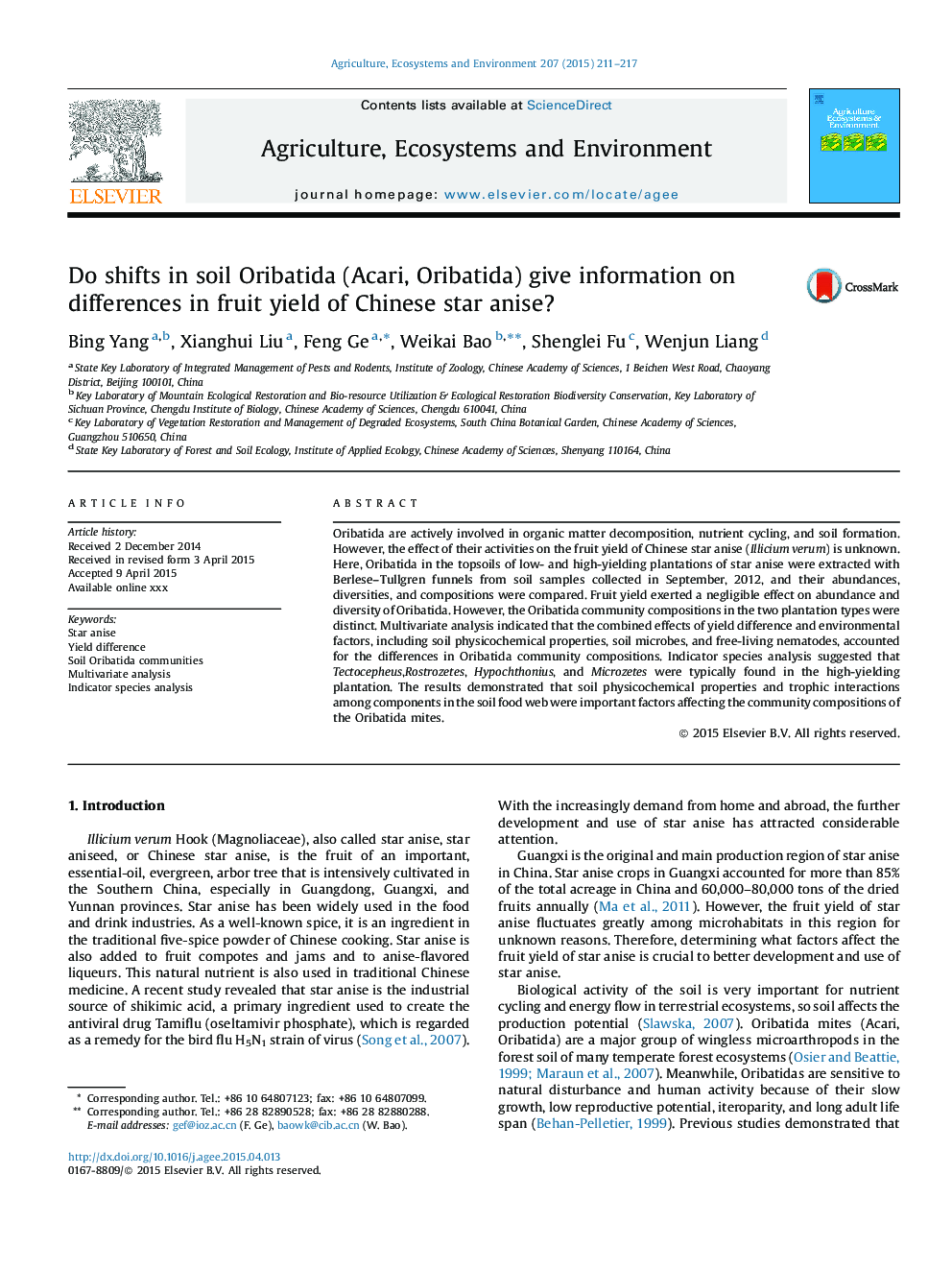| Article ID | Journal | Published Year | Pages | File Type |
|---|---|---|---|---|
| 8487735 | Agriculture, Ecosystems & Environment | 2015 | 7 Pages |
Abstract
Oribatida are actively involved in organic matter decomposition, nutrient cycling, and soil formation. However, the effect of their activities on the fruit yield of Chinese star anise (Illicium verum) is unknown. Here, Oribatida in the topsoils of low- and high-yielding plantations of star anise were extracted with Berlese-Tullgren funnels from soil samples collected in September, 2012, and their abundances, diversities, and compositions were compared. Fruit yield exerted a negligible effect on abundance and diversity of Oribatida. However, the Oribatida community compositions in the two plantation types were distinct. Multivariate analysis indicated that the combined effects of yield difference and environmental factors, including soil physicochemical properties, soil microbes, and free-living nematodes, accounted for the differences in Oribatida community compositions. Indicator species analysis suggested that Tectocepheus, Rostrozetes, Hypochthonius, and Microzetes were typically found in the high-yielding plantation. The results demonstrated that soil physicochemical properties and trophic interactions among components in the soil food web were important factors affecting the community compositions of the Oribatida mites.
Related Topics
Life Sciences
Agricultural and Biological Sciences
Agronomy and Crop Science
Authors
Bing Yang, Xianghui Liu, Feng Ge, Weikai Bao, Shenglei Fu, Wenjun Liang,
